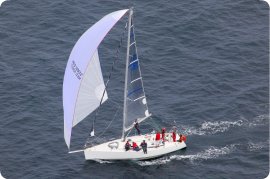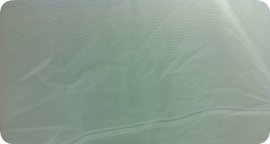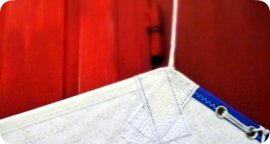“Flying Sails: asymmetric, symmetric, furling. From the spinnaker to the code O, there's a big difference”
The family of the so-called Flying Sails is one of the market sectors that has changed the most in recent years.
This process has given rise to a signal of process of numbers that could be at home in a naval battle: a3 - a7 - c) - c3 - s2 - s4 and it seems, the more you have, the higher the number you have to put up.
Keep going and hold fast the distinction between A = asymmetric, S = symmetric, and C = furling. In our words bread is bread, and wine is wine, so spinakers and asymmetric spinakers (also the furling type) are all called runners:
- Runner: to go down wind as deep as possible with sustainable wind speed
- VMG: to go as high on the wind as you can with light airs
- Allround: for all round wind conditions and cruising
Our Company has a vast experience in making asymmetrics, designed for boats with a bow sprit, like Jboats and other monotypes such as the ocean racing Class 40.
Obviously there are different ways to make sails relevant to Wsail's experience:
- Wsail designs and makes sails for people with a variety of sailing experience. For example, a medium runner that is not very radical and made for medium to light wind conditions, has to have the right balance between the distance to the mark and the speed sailed.
- The owner’s usage dictates what materials are used. In the Ocean Line we focus on using materials with maximum resistance that can withstand extreme conditions for a prolonged period of time.
- Sometimes we make more extreme sails for a limited range of use. For example, when the air is very light and you want to take a direct line, when everything is tight in...
Our philosophy is to create sails to our clients measurements. For this reason before we begin making a Flying sail, we will have a long chat about the destres for that sail.
“After that there are materials,
systems of assembling and finishing.”
We only use Contendernylon, the leading company for spinnaker materials. "Inshore" or light sails are glued together rather than sewn, while heavier sails for heavy airs are both glued and sewn. The cut is always radial and when possible varied. Many sailmakers cut horizontally, especially in the central body of the sail, in order to save time and materials. The reinforcement patches also are radial, and for asymmetric sails, the clew is only made with an integrated spectra strop, to be more easy when gybing, less weight and no metal parts.
We also supply accessories like the turtle bag for racing, furlers and spinnaker sleeves. We can supply all the advice you need, along with all the accessories you need in order to use Flying sails safely and comfortably.







